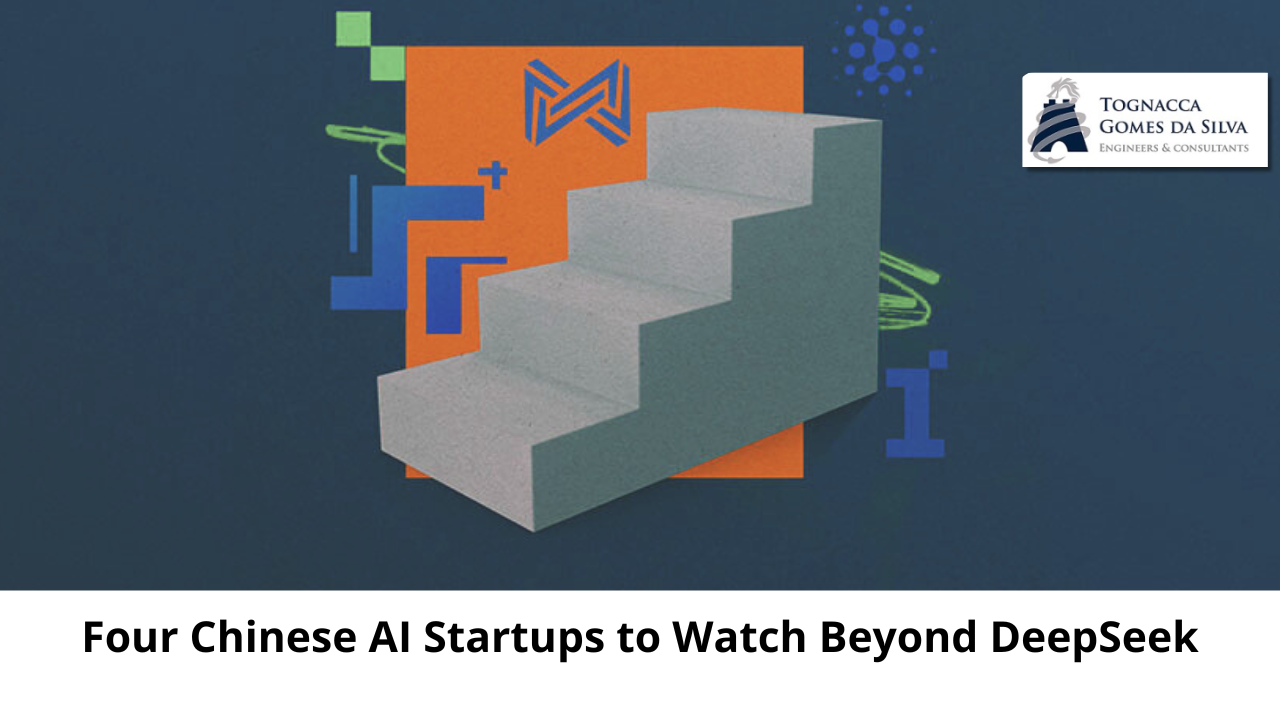The meteoric rise of DeepSeek — the Chinese AI startup now challenging global giants — has surprised observers and put the spotlight on China’s AI sector. Since the launch of ChatGPT in 2022, the Chinese technological ecosystem has tirelessly sought national alternatives, driving a wave of startups and billion-dollar investments.
Currently, the race is dominated by tech giants like Alibaba and ByteDance, alongside well-funded competitors backed by heavyweight investors. However, two years into China’s generative AI boom, we’re seeing a shift: smaller startups need to find niches of their own or risk being left behind. What started as a sprint has turned into a high-stakes marathon — and China’s ambitions for AI have never been greater.
A select group of companies known as the “Six Tigers” — Stepfun, Zhipu, Minimax, Moonshot, 01.AI, and Baichuan — are generally considered to be at the forefront of the Chinese AI sector. But beyond them, research companies like DeepSeek and ModelBest continue to gain influence. Some, such as Minimax and Moonshot, are giving up foundational model training, which requires large investments, to focus on developing applications based on third-party, consumer-facing models. Others, such as Stepfun and Infinigence AI, are redoubling their research efforts, driven in part by US restrictions on the semiconductor sector.
We identify four Chinese AI startups that deserve attention
Stepfun
Founded in April 2023 by former Microsoft senior vice president Jiang Daxin, Stepfun was a relatively late entrant into the emerging AI business market, but quickly became a strong competitor thanks to its portfolio of foundational models. Furthermore, the company maintains a firm commitment to the development of Artificial General Intelligence (AGI) — a goal that many startups in the country have already abandoned.
With support from investors such as Tencent and funding from the Shanghai government, the company has launched 11 foundational AI models over the past year, covering language, computer vision, video, audio and multimodal systems. Its largest language model to date, Step-2, has over 1 trillion parameters (for comparison, GPT-4 has about 1.8 trillion). It currently ranks just behind models from ChatGPT, DeepSeek, Claude, and Gemini on LiveBench, a third-party evaluation site that measures the power of major language models.
Stepfun’s multimodal model, called Step-1V, also stands out in understanding visual inputs, occupying a high position in Chatbot Arena – a collaborative platform, in which users compare and classify the performance of different AI models.
Now, Stepfun is working with AI application developers, who use its models as a basis. According to Chinese portal 36Kr, demand for access to Stepfun’s multimodal API increased more than 45 times in the second half of 2024.
ModelBest
Researchers from the prestigious Tsinghua University founded ModelBest in 2022 in the Haidian district of Beijing. Since then, the company has distinguished itself by prioritizing efficiency and embracing the trend of compact language models.
Its MiniCPM line — often called “Small Powers” in Chinese — is designed for real-time processing directly in smartphones, PCs, automotive systems, smart home devices and even robots. The company’s proposal to its customers is that this combination of smaller models and local processing reduces costs and improves privacy.
ModelBest’s latest model, MiniCPM 3.0, has just 4 billion parameters, but achieves performance equivalent to GPT-3.5 in several benchmarks. On GitHub and Hugging Face, the company’s models can be found under the OpenBMB (Open Lab for Big Model Base) profile, its open-source research laboratory.
Investors are already paying attention: in December 2024, the company announced its third round of financing, valued at tens of millions of dollars.
Zhipu
Also originating from Tsinghua University, Zhipu AI has grown and established itself as a company with strong ties to the government and academia. The company develops both foundational models and products based on them, including ChatGLM, a conversational model, and Ying, a video generator similar to OpenAI’s Sora.
The company’s most advanced language model to date, GLM-4-Plus, was trained on high-quality synthetic data, reducing training costs but still achieving performance comparable to GPT-4. Furthermore, the company developed the GLM-4V-Plus, a vision model capable of interpreting web pages and videos: this is another step towards AI systems with greater capacity for autonomous action.
Among the new AI ventures emerging in China, Zhipu was the first to catch the attention of the US government. On January 15, 2025, the Biden administration revised its export control regulations and added more than 20 Chinese entities to its trade restricted list — including 10 subsidiaries of Zhipu AI — prohibiting them from receiving U.S. goods or technology for reasons of national interest. The American government claims that Zhipu’s technology is helping the Chinese army, something the company denies.
Currently valued at over $2 billion, Zhipu is one of China’s largest AI startups and is reportedly planning an initial public offering (IPO) soon. Its investors include funds affiliated with the Beijing government and several prestigious VCs (venture capital).
Infinigence AI
Founded in 2023, Infinigence AI is smaller than the other companies on this list, but has already managed to attract $140 million in funding. The company does not develop AI models, but focuses on the infrastructure for running models. Its main selling point is the ability to integrate chips from different manufacturers to perform AI tasks, forming what is called a “heterogeneous computing cluster” — a unique challenge for Chinese AI companies, given US sanctions on the semiconductor sector.
Infinigence AI claims its system can increase the efficiency of AI training by optimizing how different chip architectures — including models from AMD, Huawei and Nvidia — work synchronously.
Additionally, the company launched the Infini-AI cloud platform, which combines products from multiple vendors for model development and deployment. According to the company, its goal is to build an efficient computing solution “with Chinese characteristics”, designed specifically for AI training. Infinigence also claims that its HetHub training system can reduce AI model training time by 30%, optimizing the use of heterogeneous computing clusters often used by Chinese companies.
Honorable Mentions
Baichuan
While many of its competitors seek scale and broad application, Baichuan AI, founded in April 2023 by industry veteran Wang Xiaochuan (founder of Tencent subsidiary Sogou), is focused on the Chinese domestic market, with an emphasis on sectors such as healthcare and healthcare.
With a valuation of over $2 billion following its latest fundraising round, Baichuan is currently one of China’s largest AI startups.
Minimax
Founded by Yan Junjie, an influential figure in the field of AI, Minimax is best known for its product Talkie, a globally available companion chatbot. The platform offers diverse characters that users can interact with for emotional support or entertainment, and has recorded more downloads in the last year than Character.ai, one of its main competitors in the chatbot sector.
According to Chinese portal 36Kr, Minimax’s revenue in 2024 was approximately US$70 million, making it one of the most successful Chinese AI startups in the global consumer market.
Moonshot
Moonshot is best known for developing Kimi, the second most popular AI chatbot in China, behind only ByteDance’s Doubao, and accumulating more than 13 million users. Launched in 2023, Kimi supports text inputs of over 200,000 characters, making it a popular choice among students, office professionals, and users dealing with large volumes of text.
The startup was founded by Yang Zhilin, a renowned AI researcher who graduated from Tsinghua University and Carnegie Mellon University. Moonshot has the support of technology giants such as Alibaba and leading venture capital funds. However, the company – currently valued at around US$3 billion – is reducing its investments in foundational model research and international expansion plans. This happens due to the departure of key team members.
( fontes: MIT Technology Review )



